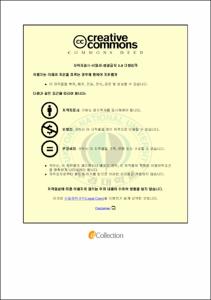양식 넙치, Paralichtys olivaceus에서 Streptococcus iniae와 Edwardsiella tarda의 단독감염과 혼합감염 연구
- Alternative Title
- Single and mixed infection by Streptococcus iniae and Edwardsiella tarda of cultured olive flounders, Paralichthys olivaceus
- Abstract
- The attack rate of bacterial infections caused by an independent infection with Vibrio spp. in seawater halibuts was found to be the same with the attack rate of bacterial infections caused by a combined infection with Streptococcus spp. and Edwardsiella tarda. This study was done to investigate the effect of an individual and/or a combined infection with Streptococcus iniae and Edwardsiella tarda on cultivated halibuts.
When E. tarda (FP5060) and S. iniae (FP5228) were infected independently or together, the degree of pathogenicity was investigated by infecting each bacillus in halibuts. This was done through measuring the number of bacilli, the relative rate of survival, the basic organization (brain, kidney, spleen and liver) and the blood. As a result, in case of the independent infection, more bacilli in each organization and in the blood were observed than when E. tarda (FP5060) and S. iniae (FP5228) were infected together. However, for the pathogenicity, the combined infection showed more bacilli than the independent infection. Thus, there was a low rate of survival.
Using the values of GLU, AST/GOT, ALT/GPT and TP in the serum, the health status of halibuts was investigated during the combined infection with E. tarda (FP5060) and S. iniae (FP5228), as well as the independent infection. As the result, the value of GLU in serum was somewhat reduced regardless of the infection method as times went by. Therefore, it could be confirmed that halibuts’ unique immunity was gradually lost and the value of AST/GOT in the serum became higher 3 days after the combined and the independent infection with E. tarda (FP5060) and S. iniae (FP5228). Additionally, the value of AST/GOT was higher during the combined infection than during the independent infection. Thus, the damage of halibuts’ organization was more fatal during the combined infection than during the independent infection. The values of ALT/GPT and TP did not show significant differences between the experimental group and the control group, and there was also no noticeable difference as times went by after the artificial infection.
Aside from examining the GLU concentration in serum, halibuts’ unique immunity was investigated also by examining the activity of the lysozyme. As a result, the immunity of halibuts became active 1 hour after the combined infection with E. tarda (FP5060) and S. iniae (FP5228), as well as the independent infection. In addition, the value of the lysozyme activity was higher during the independent infection than that of the combined infection. Thus, it was confirmed that halibuts’ immunity for E. tarda (FP5060) and S. iniae (FP5228) was weak during the combined infection.
Therefore, the rate of relative survival was lower during the combined infection than the independent infection with E. tarda (FP5060) and S. iniae (FP5228), since the degree of halibut's organization damage was serious during the combined infection, considering the value of AST/GOT and halibuts’ unique defense action. Also, glucose concentration and lysozyme activity became low, thus, the immunity became weaker than that of the independent infection. However, the number of bacilli in each organization and in the blood was not related to the degree of pathogenicity for halibuts in E. tarda (FP5060) and S. iniae (FP5228).
Additional studies on the effect of independent and combined infections with E. tarda (FP5060) and S. iniae (FP5228) halibuts must be conducted in the future due to a short period of study.
- Issued Date
- 2012
- Awarded Date
- 2012. 8
- Type
- Dissertation
- Publisher
- 부경대학교
- Alternative Author(s)
- Ju Young Shin
- Affiliation
- 부경대학교 교육대학원
- Department
- 교육대학원 생물교육전공
- Advisor
- 김경호
- Table Of Contents
- 목 차 ⅰ
List of Table ⅲ
List of Figures ⅳ
Abstract ⅵ
Ⅰ. 서론 1
Ⅱ. 재료 및 방법 6
1. 실험세균 6
2. 시험어 6
3. 실험세균의 생물학적 특성 분석 7
4. 인위감염 10
5. 조직별 세균 수 검사 및 실험세균에 대한 시험어 관찰 12
6. 혈액생화학검사 13
7. 라이소자임 활성 14
Ⅲ. 결과 및 고찰 15
1. 실험세균의 생물학적 특성분석 15
가. Gram stain 15
나. API20Strep과 API20E 18
다. 용혈성 및 SS배지에서의 배양성상 21
라. BHIA배지에서의 배양 성상과 온도 및 염분 내성 실험 22
2. 상대생존율 24
3. 조직 및 혈액의 세균 수 검사 26
가. 조직(Brain, Spleen, Kidney, Liver)에서의 세균 수 26
나. 혈액에서의 세균 수 검사 33
4. 실험세균에 따른 시험어 관찰 35
5. 혈액생화학검사 37
6. 라이소자임 활성 41
Ⅳ. 요 약 43
Ⅴ. 감사의 글 45
Ⅵ. 참고문헌 47
- Degree
- Master
- Files in This Item:
-
-
Download
 양식 넙치, Paralichtys olivaceus에서 Streptococcus iniae와 Edwardsiella tarda의 단독감염과 혼합감염 연구.pdf
기타 데이터 / 1.95 MB / Adobe PDF
양식 넙치, Paralichtys olivaceus에서 Streptococcus iniae와 Edwardsiella tarda의 단독감염과 혼합감염 연구.pdf
기타 데이터 / 1.95 MB / Adobe PDF
-
Items in Repository are protected by copyright, with all rights reserved, unless otherwise indicated.